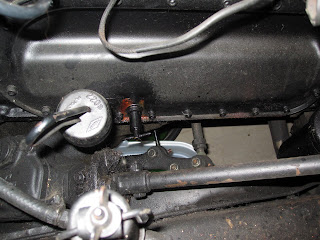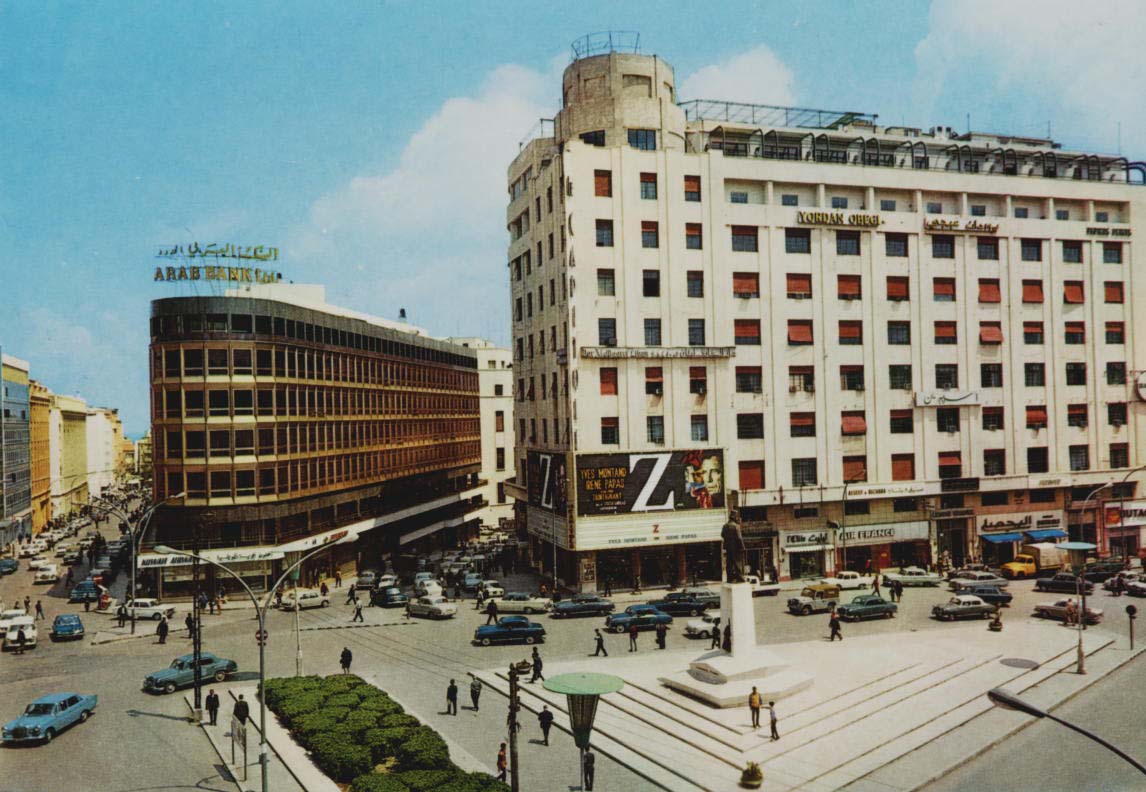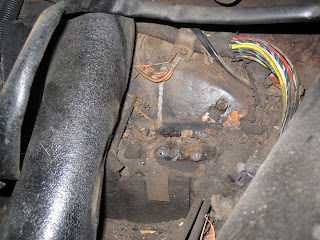Yesterday, I got Ernie to swing by for a few minutes, so I could pick his brain. One of the things I quizzed him on was the removal of the instrument cluster. So, with that knowledge trapped in my head, I set out to get that sucker removed today.
Here's the back of the instrument cluster area. First thing is to pop those two springs off the mounts. Easy peasy.
Next is to remove this cable that is snaking its way around and into the side of the engine. The hidden part is a post that goes in, much like a catheter - this is the engine temperature cable.
A bit of Deep Creep, and a couple of medium whacks on a 14mm wrench with a hammer... and it's loose. One thing Ernie had mentioned was that the nut should spin around the main post. I tried holding the center piece steady with some needlenose pliers while spinning the nut with a wrench, and had no luck. But, it came out alright in the end, it appears.
Next is to unplug an 8-pin connector. There's a pair of flathead screws on one end that loosen up.
A shot of the insides of this connector.
Next task is to get the instrument cluster pulled out part-way. There are some other connections that have to be removed from the inside of the car.
Here's what I believe is the trip meter reset (the long skinny pipe piece with the nut toward the end). Normally mounted under the instrument cluster on a piece of the wood dash with several mount holes, with a knob screwed on the end.
This cable snakes through a hole in the firewall. Inside shot...
...and outside. A simple matter of removing the nut, maneuvering the solid pipe part through and around some other wiring, and getting it in proper position to tug out through the firewall.
And there it is! One more task done.
Now I'm able to get the cluster out a ways.
I believe this is the speedometer cable connector...
...and this the oil temperature gauge connector. I'll update with corrections later if I find I'm mistaken (and I probably am). Both of these come off easily.
At this point, I'm still stuck - what did I miss? Well there's one last connector on the left.... aha! Engine temperature sensor! This cable is threaded through the center engine compartment plate, and held in place with a rubber grommet. Said rubber is toast after 52 years, and I end up cutting it away/picking it apart, so I can pass the loose end of the engine temp sensor through (big nut and all). A bit more maneuvering, and...
...it's out!
Now the dashboard looks REALLY pitiful. Time for it to come out as well... at least, that's what I'm telling myself.
First, the vents. This vent is loose but won't just tug out - there's a piece of the vent hose still attached on the back side.
Once that's out, the vent comes away without trouble.
The passenger vent still has a spring attached, I discovered, when trying to remove the dash (see below).
At this point, I was stumped - the dashboard seemed pretty well stuck. So, I do what I do in these cases - post a "help!" comment on the Ponton list. And Phil, one of the Pontoneers, replied after a little while with some info that led me here:
Yes, that's a screw on the *inside* of the dashboard. And it took sticking a mirror in there to find out where that sucker was. How annoying and bizarre! Fortunately I have small hands, and an even smaller screwdriver - which barely fit into the gap. I had to use fingertips on both hands, reaching in both holes, to get that screw out.
Lo and behold, the dash comes away! Well, mostly.
There's the matter of freeing the right-side vent (see above) and disconnecting the cigarette lighter base...
And it's off! Phew.
In between attempts at getting the dash off, I notice that the side mirror is stupid easy to remove. Just a couple of nuts to remove.
Here's a pic of the rubber seal once the mirror is off. Amazingly, it's in pretty good shape - I may not have to replace it!
Mirror, rubber seal, nuts and the metal crosspiece from the inside of the door, reunited and now living on a shelf.




















































